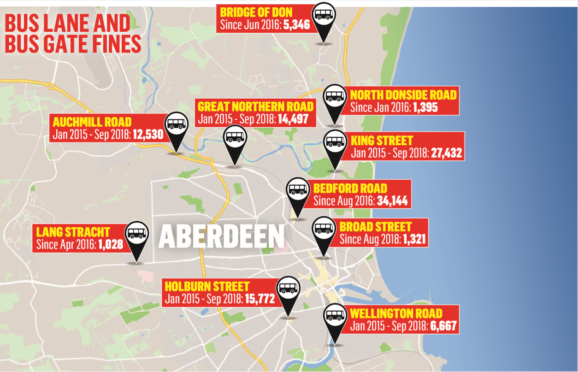Aberdeen City Council has raked in more than £7million pounds worth of fines from bus lane and bus gate fines over the past three and a half years.
Across the city’s 10 areas where cameras are in place to prevent cars driving where they are not allowed, more than 12,000 penalty charge notices have been dished out by the council since the start of 2015.
Drivers faced with the fines must pay £60, reduced to £30 if paid within a time limit.
The road with the highest frequency of fines over the period was Bedford Road, where a controversial bus gate system was installed in the middle of 2016.
Since the cameras were turned on, more than 5,500 drivers have been caught out – the second-highest number of notices handed out by the council was on King Street at more than 3,500, even though it has been in operation for much longer.
>> Keep up to date with the latest news with The P&J newsletter
Cash raised from bus lane and bus gate enforcement is invested in improving local infrastructure.
Pete Williams, spokesman for motoring firm RAC, said: “We don’t believe the vast majority of drivers knowingly break the rules.
“What we do know is a lot of this is down to improving signage.
“Every driver will be familiar with the blue bus lane sign, but on Aberdeen’s streets with a lot of signage clutter it can be very easy to miss the specific times of operation.”
Ian Yuill, Liberal Democrat group leader at the local authority, said: “It is very worrying that so many people are still flouting the rules at Bedford Road, despite the clarity of the signage and how much publicity there has been about people being caught out there in the past.
“The important thing is that the fines are invested in transportation and road projects, but ideally the best level of fines at bus gates and bus lanes would be zero.”
Councillor John Wheeler, convener of the council’s operational delivery committee, said: “Restrictions are vital to ensuring a managed flow of traffic, and that is the prime aim of the cameras, rather than generating revenue.
“The ability to use the net surplus of funds from the bus lane enforcement for transport projects allows the city council to deliver a much greater range of projects for the benefit of its residents and the travelling public.”
